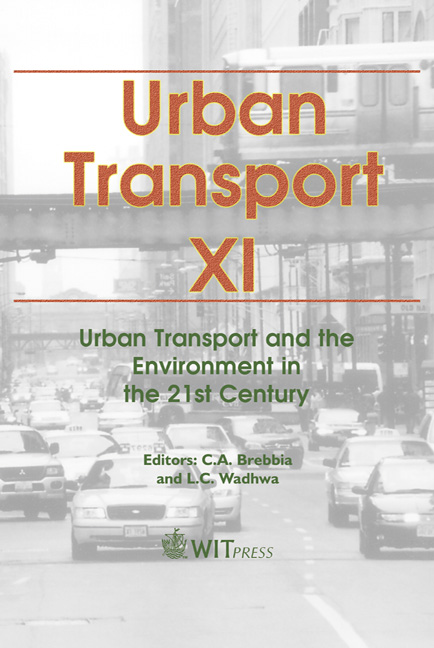Routing Of Delivery Vehicles In A City With Access Time Windows
Price
Free (open access)
Transaction
Volume
77
Pages
9
Published
2005
Size
492 kb
Paper DOI
10.2495/UT050021
Copyright
WIT Press
Author(s)
J. Muñuzuri, J. Larrañeta & J. N. Ibáñez
Abstract
The introduction of access time windows, or periods of the day during which delivery vehicles are not allowed to enter certain areas of a city, is a policy commonly applied by local authorities in order to better reorganise urban traffic flows. However, there are no estimations of the additional costs inflicted on carriers, even though the need for more complicated routes, and often more vehicles, is evident. This paper describes a model for estimating the effect of introducing access time windows in a given city by minimising the number of required vehicles and the route lengths and comparing them with the required vehicles and routes without time windows. The linear model used for the optimisation is described, as well as the solutions obtained for a test network, consisting of a number of nodes and links, part of which cannot be entered during a certain period of the day. 1 Introduction The widespread use of the Vehicle Routing Problem with Time Windows (VRPTW) (Bramel and Simchi-Levi [3]) in scientific literature and commercial software applications enables the planning of routes for a vehicle fleet when certain time restrictions are imposed by the recipients, i.e. the obligation of making each delivery during a fixed time slot. However, in the case of urban deliveries, it is found that in many cases these time window restrictions are not imposed by the recipients, but by the local administration. The impossibility of accessing an area of the city, normally the city centre, during a relatively large period of the day clearly imposes restrictions on the routing of delivery vehicles. And the VRPTW is not sufficient for taking into account these access time windows, since it is not only the destination nodes the ones that are not to be
Keywords





